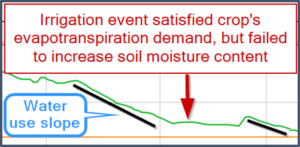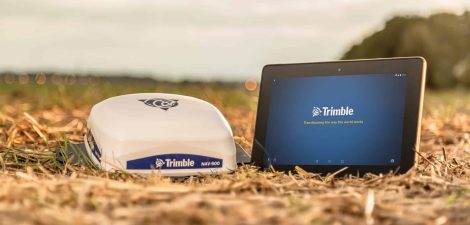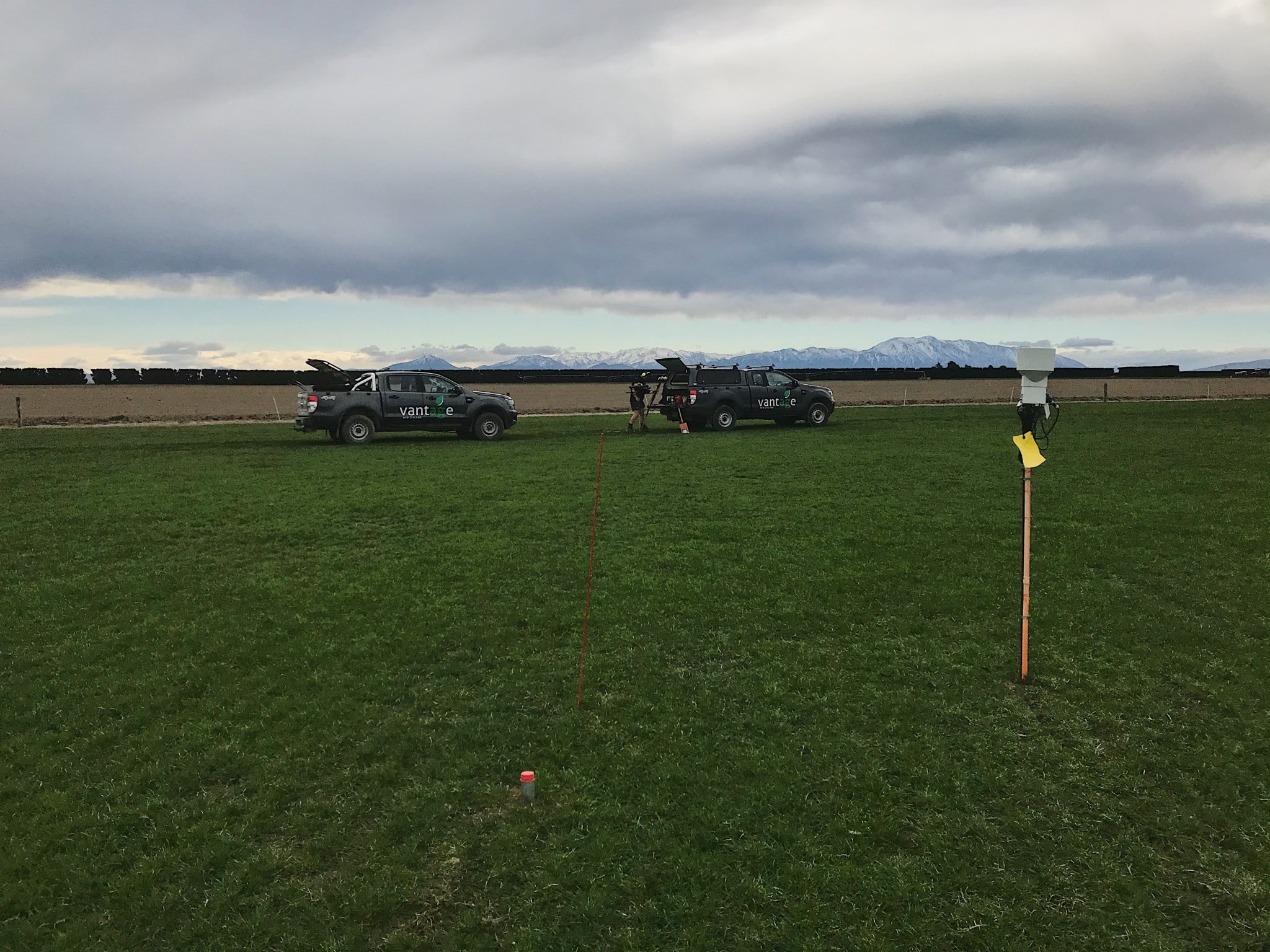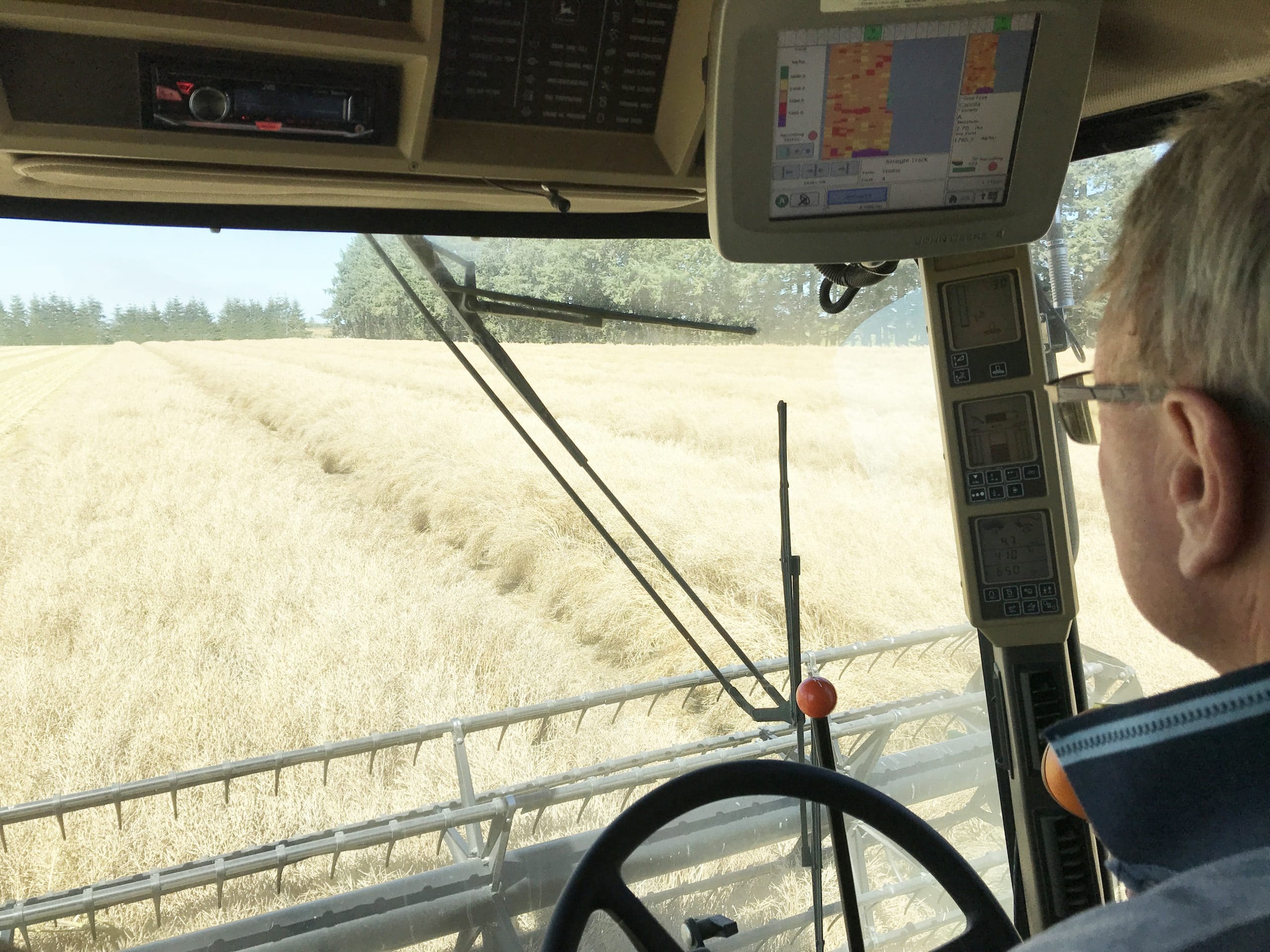From time to time we get the query: “my soil moisture sensor hasn’t responded to recent irrigation events, there must be something wrong with the sensor”.
While it is easy and natural to blame the sensor, the reason is often found in the field. There are physical reasons why a sensor may not register an event and the problem could be caused by a combination of these.

Canopy interception
The crop’s canopy will intercept some of the rainfall and/or irrigation water. Obviously, this will vary greatly from crop to crop and throughout the growth stages. It stands to reason that a mature crop of maize will intercept more water than freshly grazed pasture.
Much of the intercepted water will evaporate, but while it is sitting on the leaf it will cool the leaf and reduce the plant’s evapotranspiration rates.
Some of the intercepted water will trickle down the stem and enter the soil at the plant base, but not in sufficient quantities to register at the first sensor depth.
This scenario will look like a neutral response on the soil moisture graph (Figure 1). The irrigation event has not caused a soil moisture increase, but it did satisfy the plant’s evapotranspiration demand, so there is no water use for the day.
Application depth –less than daily water use and/or less than 0-100mm deficit
This tends to be a problem under pivots and fixed sprinklers. Daily irrigation of 4-5mm may not be enough to result in a significant change in soil moisture content at the first sensor depth (100mm). Firstly, some of the water will be intercepted. Secondly, the application may be less than the deficit present above the first sensor site, the water will infiltrate into the soil but may be absorbed in the top 50mm of soil. In this case the response to the irrigation event at the first sensor (100mm) will, at best be a “flattening” of the trace; soil moisture will remain at its current level.
Bypass-flow -dry soils and soil type
Bypass-flow occurs when water passes through the macro pores (or gaps between soil particles) and is not absorbed by the soil particles. Bypass-flow and soil type are linked; coarse texture soils have more macro pores, increasing the potential for bypass-flow.
Bypass-flow and soil moisture content are also linked. As a soil dries it can undergo slight structural changes which may result in increased macro-porosity. The effect of drying varies with soil type. A fine textured soil with higher clay content will tend to shrink; typically, at the surface of the soil resulting in opening of cracks in the soil. In coarser textured soils cracks will not develop, but individual aggregates will contract, increasing the soil’s macro-porosity.
Water passing through the macro pores, or cracks, may not be registered by the soil moisture sensor; firstly, because the slurry used when the sensor is installed will have fewer macro pores than the rest of the field; and secondly, because the water fails to ‘linger’ long enough to infiltrate and re-wet the dry slurry the sensor is installed in.
Lack of sensor response due to a dry soil profile is most common in crops where the readily available water is greatest, e.g. wheat or carrot seed.
It is less common in frequently irrigated crops where the readily available water is small, e.g. ryegrass pasture, vegetable seeds and peas.
Key management strategies
It is useful to think of the soil moisture sensor as any other tool on the farm; it needs to be maintained to work properly. The sensor responses will be more reliable if slurry is not allowed to dry out. Soil moisture sensor management strategies include:
Adjust application depth to overcome crop interception.
Adjust application depth to be greater than daily water use.
Adjust application depth to ensure irrigation water will replace the target deficit.
If the slurry has dried and sensor response is lost, this is resolved through long duration rainfall, rather than re-installation of sensors. Usually all sensors regain perfect contact with the soil over the winter months.
At Vantage NZ we are proud to supply you with high quality AquaCheck soil moisture sensors and neutron services and to back it up with a high standard of service and expertise. Give us a call to discuss your soil moisture monitoring requirements and get set up in good time for the 2021-22 season.
Article written by: Jane Robb, Customer Support Specialist




